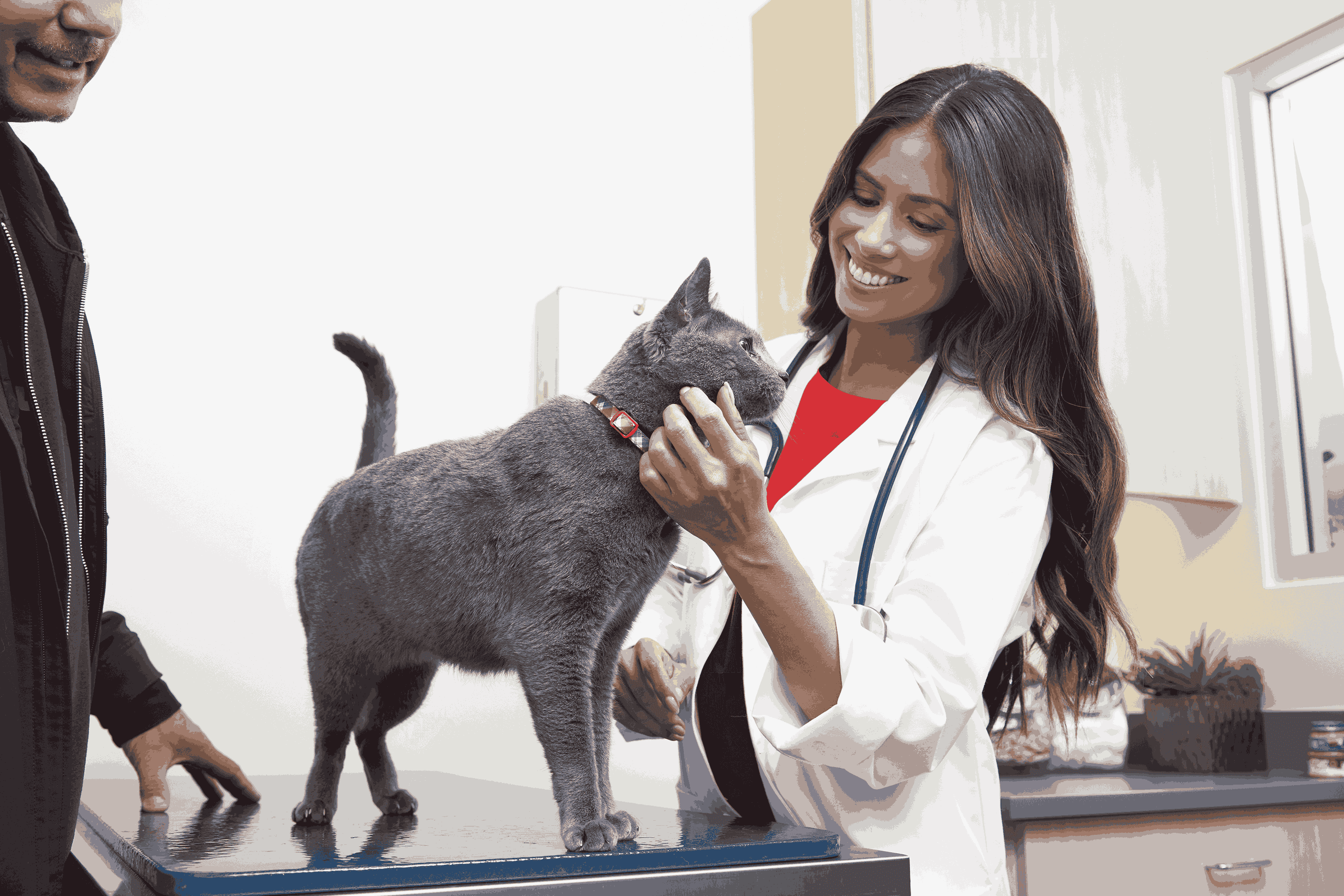Pigment Changes in Cats
Hyperpigmentation, Hypopigmentation, Depigmentation


SUMMARY OF CONTENT
SEVERITY:
-
Resolves within days to weeks after treatment in some cases, in other cases this can be a chronic pr
-
Treatable by a veterinarian
-
No known prevention
-
Transmission is not possible between animals and not possible between animals and people
-
Diagnosis requires Physical examination, blood testing, biopsy
VERY COMMON IN
Symptoms & Signs
Pigment changes in cats can appear in many ways, depending on the cause. The pet parent will usually notice a change on the surface of the hair coat. In some cases, pet parents will notice single, round nodules on or underneath the skin. These may appear bluish and may contain a thick, yellowish to gray material. Other pigment changes may appear as more of skin irritation, with the pet parent noticing redness, itching, scales and ulcerated nodules. In other cases, the pigment change manifest as oily fur, loss of pigment in certain areas, of simply as hair loss.
Diagnosis
In any case of pigment change, your veterinarian will begin with a physical examination of your cat. Depending on the appearance of the pigment change, secondary testing will be recommended. This will usually include blood testing to check for systemic disease and often a biopsy or fine needle aspirate of the area. These tests allow veterinarians to collect cells from the region to identify what is causing the issue. A fine needle aspirate is usually done at the initial appointment. A small needle is inserted into the area of concern and the cells are examined under the microscope. If the cells are not definitive for a diagnosis, your veterinarian will recommend a biopsy to collect a section of the skin and send it to the laboratory for a test called a histopathology. This test can give a complete diagnosis.
Causation
If the skin or coat has a color other than white, it is said to be pigmented. Colors include brown, black, red, purplish-blue, and yellow. If the skin is a darker color than normal, it is said to be 'hyperpigmented.' Pigment is the result of melanin in the skin. Cats have different levels and density in pigment, making their coats different colors. When the skin of any animal is disrupted, the melanin within the skin also becomes disrupted and disorganized. This can cause a mild pigment change, or the changes can be more noticable. Conditions that cause mild pigment changes include post injection site alopecia, or lentigo in orange cats. These conditions are mild and do not cause any harm to the cat. Masses that grow on the cat’s skin can also cause pigment changes. These include growths like mast cell tumors, apocrine cysts, Bowen’s disease tumors and basal cell tumors. All of these cause abnormal cell growth and disruption of the skin, leaving a growth in the place of normal skin. Some of these masses can be cancerous, while some can be benign and not cause any issues. Systemic diseases like hyperadrenocorticism and hypothyroidism can also cause pigment changes, mainly due to disruption of the normal skin and hair cycles. When skin and hair is not replenishing normally secondary to these conditions, secondary pigment changes can occur.
Treatments
AT-HOME CARE
SUPPORTIVE CARE
MEDICATIONS
DEVICES
SURGERY
SPECIALISTS
Cost Of Treatment
The cost of treatment may vary depending on the underlying cause. In certain cases, no treatment may be available or possible.
Recovery
Most pets can recover from this condition with proper management.
Monitoring
Your veterinarian will schedule recheck appointments based on your pet’s condition.
Prevention
There is no way to prevent pigment changes in cats from occurring.
Disclaimer
The information contained on this page is for educational purposes only. Treatment should only be provided under the advice of a veterinarian who has examined your pet under the laws applicable to your state of residence.
Questions about Pigment Changes

Two Easy Ways to Start Earning Rewards!
Become a member today!Members-only pricing and offers, personalized care notifications, Vital Care points back on every purchase and more!Become a credit card member today!
Earn 2X Pals Rewards points at Petco
when you use Petco Pay!APPLY NOWLearn More About Petco Pay Benefits






